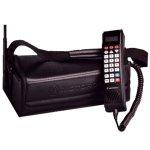PRESCRIPTION FOR MURDER: Technology at the time
 Voice Activated Locks They sound like something futuristic, something similar to that of Captain Kirk’s log on the Starship Enterprise. Having this form of protection for the lab where Seromig, the miracle Migraine drug, is under development puts the Closter Drug company at the cutting edge of the technology available at the time, if not well ahead of it. Such was the imagination of the author.
Voice Activated Locks They sound like something futuristic, something similar to that of Captain Kirk’s log on the Starship Enterprise. Having this form of protection for the lab where Seromig, the miracle Migraine drug, is under development puts the Closter Drug company at the cutting edge of the technology available at the time, if not well ahead of it. Such was the imagination of the author.
However, from the beginnings of voice-recognition software in 1982, many such early systems could only recognise a very limited vocabulary and needed training to reliably interpret particular accents or dictions. It would take nearly a further fifteen years of development before dictation-speed recognition was realised. Now, voice activated systems are becoming a common feature of modern life found in mobile phones and car systems, and for security systems.Usually combined with other security measures such as keys or a coded pin pad, voice recognition software is promoted as the newest and safest form of security. Manufacturers claim it is ‘extra-safe’ due to the fact that every human being’s voice structure is unique and that the biometric software (software that measures anything to do with humans, such as vocal patterns, retinal patterns or behaviour) is infallible.
 Mobile Phones and Technology The author of ‘Prescription for Murder’ is possibly less well ahead in regard to the ‘mobile’ phone technology that plays a part in the story.It is inconceivable to us that a mobile phone cannot pick up a signal wherever the user is situated. However, in the early days of mobile technology the bulky nature of the phones meant that they were far from being readily portable and there were limited networks with patchy coverage.
Mobile Phones and Technology The author of ‘Prescription for Murder’ is possibly less well ahead in regard to the ‘mobile’ phone technology that plays a part in the story.It is inconceivable to us that a mobile phone cannot pick up a signal wherever the user is situated. However, in the early days of mobile technology the bulky nature of the phones meant that they were far from being readily portable and there were limited networks with patchy coverage.
So there would be no surprise that Dermot Hackle had not been able to get through on his car phone to let his colleagues know he had been delayed. Nor, unlike calls made through landlines, would it later in ‘Prescription for Murder’ have been possible to trace a call from such a mobile phone, giving the hijackers considerable freedom of action.
 Early days The quintessential building blocks for what would be the modern mobile phone were facilitated by the coalescence of radio and telephone technology. In the twenties and thirties, devices to exploit the technology were developed for use by the military, police and government communications.One of the world’s first mobile system, a wireless Morse code transmitter was installed in a Detroit police station in 1921. Instead of relying on wires, the system worked via the transmission of 2MHZ signals between the main transmitter and receivers mounted in local police vehicles. Whilst this system was only uni-directional and so did not allow for conversation, it offered the prospect of immediate communication wherever a person was.
Early days The quintessential building blocks for what would be the modern mobile phone were facilitated by the coalescence of radio and telephone technology. In the twenties and thirties, devices to exploit the technology were developed for use by the military, police and government communications.One of the world’s first mobile system, a wireless Morse code transmitter was installed in a Detroit police station in 1921. Instead of relying on wires, the system worked via the transmission of 2MHZ signals between the main transmitter and receivers mounted in local police vehicles. Whilst this system was only uni-directional and so did not allow for conversation, it offered the prospect of immediate communication wherever a person was.
However it is a Kentucky melon farmer, Nathan Stubblefield, who is credited with holding the first patent for a wireless telephone, which he invented in 1902. Transmission from one telephone to another used magnetic fields, and the considerable amount of copper wire needed for each receiver meant that it was the size of a dustbin lid and had a range of just half a mile. He publicly demonstrated the system broadcasting music and speech and further developed it to communicate with moving vehicles – stagecoaches. Regrettably he was a man ahead of his time whose mobile phones were not commercially successful in his lifetime and he died virtually penniless in 1928.
Full mobility would not come to fruition until decades later when development of cellular technology would have a profound impact on the industry. It was the 1990’s before the general market for mobiles reached critical mass, until then in the world of big business the car-phone became popular. Unfortunately there were still complications, the first mobile phones were able to provide just thirty minutes of call time before they had to be recharged for ten hours. Moreover, until the mid-seventies the radio signals were still weak and, much as people still lose local radio stations on trips which take them miles away from home, phones would only be operational within a limited radius around the station sending out the signal.
All a long way from our seamless networks of mobile phones, but exactly the business environment that prevailed in ‘Prescription for Murder’.
